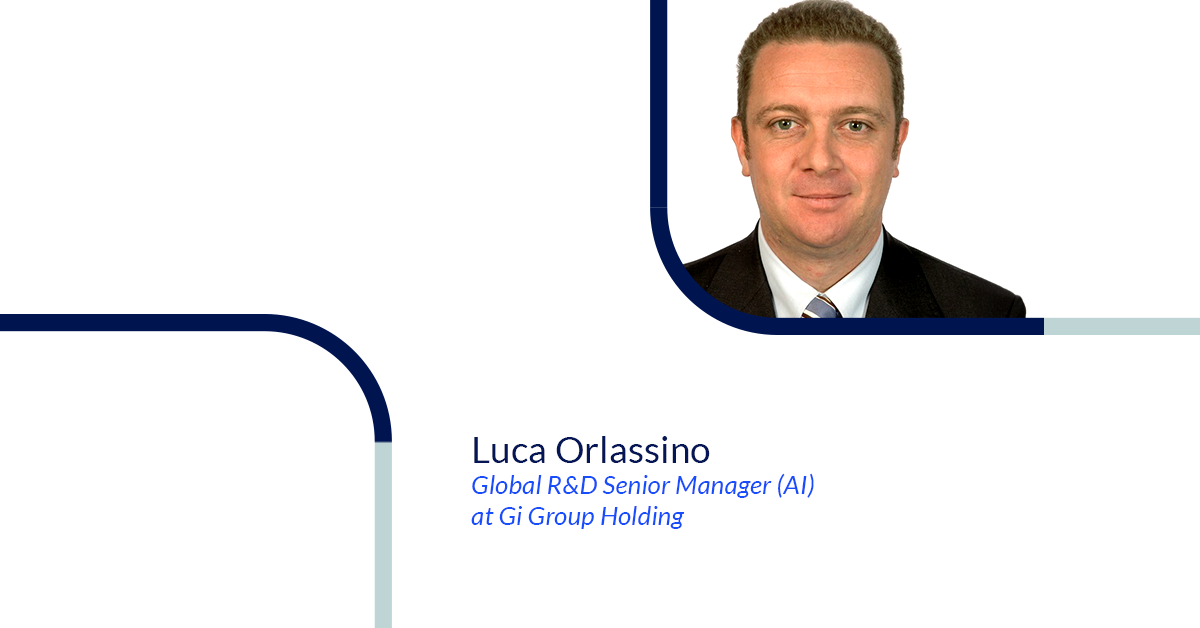The challenges of managing employee team integration in follow-up to merger and acquisition processes
Joanna Zdanowicz, HR Director at Gi Group Holding Poland
Cristina Rincon, HR Manager at Gi Group Holding Colombia

The process of melding teams and setting up seamless, well-functioning work processes following a merger or the purchase of a business by another company is never easy. That’s a given. Even statistics shared by Harvard Business Review note that anywhere between 70-90% of merger fail during the post-merger integration phase. Process advisors and HR experts highlight a number of issues that businesses can easily overlook or not get quite right which can have long-term negative impacts or prevent a promising acquisition from delivering on all the expectations the executive team had hoped for by making the company purchase. Issues often flagged by industry experts like Bridgepoint Consulting or Core BTS, who focus on post-merger or post-acquisition transition, include alignment and refinement of a common company cultures; designation of clear KPIs for newly-blended work teams (i.e., so everyone from both legacy teams and newly-onboarded employee groups understands what it expected of them and what they need to deliver); blending of tech systems infrastructure; and delivering employees the necessary training to use all office tools successfully. Below we provide some insights on post-merger employee team transitions based on the experience of two of our Gi Group colleagues Joanna Zdanowicz, HR Director at Gi Group Holding Poland, and Cristina Rincon, HR Manager at Gi Group Holding Colombia.
Understanding purpose is critical
A focus on building unity, organisational culture and change management should be at the heart of the integration process. A shared understanding of the goal the company wants to achieve is the basis for successful post-M&A transition. Firstly, the employees of both merged organisations need to know what the purpose of the merger is – what it is for the organisation, what kind of company the leadership wants to build, what it wants to achieve through the merger, what the anticipated synergy effect is, etc. The company needs to have clearly-defined targets. If the company succeeds in delivering clear responses to most or all of these questions, then employees should be given the space to find their own answers to the question “What about this change is good for me?” Understandably, the HR team and its managers can show employees different spectrums of benefits or advantages, but the employee him- or herself has to decide how they personally benefit from the change (i.e., in terms of workplace happiness, career development, personal fulfillment and more).
Addressing the WHY of the overall decision to merge and integrate is a critical first step. When merging two organisations it is important to focus on the nature and characteristics of those companies being combined. Focus on the similarities and show an appreciation for what each organisation has done well in the past and how the skills and talents that drove success can contribute to a stronger future, merged business. A lot of times mergers do not fully succeed because new strategies (changes) feel imposed from the top, often with the acquiring company focusing heavily on promoting its legacy culture and not working toward a hybrid one that respects the contributions of both merged companies’ legacy teams and respects their experience and insights. Respect is a fundamental element in the team integration process. When employees going through significant changes and disruption caused by transitions that follow mergers feel their views are respected and heard, they will work harder to find common ground and adapt to new ways forward. They do not have to win on the implementation of every change, but they will want to see their inputs have been considered.
No M&A process will full succeed without good communications
Regular (frequent), open and transparent internal communications are essential. It is important that both the whole vision of the change and the individual elements are communicated to managers so that:
1) they understand where the newly-merged organisation is headed and how processes are going;
2) they understand the new organisation’s values and culture;
and 3) they can maintain an open dialogue with their employees about the direction in which post-M&A integrations will take the business.
This includes giving employees regular opportunities to ask questions or to share their thoughts and concerns, as well managers communicating to employees who will remain in the company structure and which positions will be cut or made redundant. The more open, frank, and transparent this communication is, the less friction you will have from departing employees and the more secure continuing employees will feel and the greater their support will be for the chosen path forward. A critical part of this process involves constant, direct communications with employees who will lead post-merger projects and whose buy-in will make the transition process smooth. It is good to identify specific employees as change ambassadors. If this small group can fully understand the vision of the future merged organisation and easily explain it to their peers, this will help boost team buy-in and shore up support for the business’ future vision and mission.
Managers represent the front line where attention must be focused when merging companies. Organisational leadership needs to communicate regularly and openly with its senior and mid-level managers: showing them the reasons for the merger, how related strategy translates into action, why their commitment is necessary and how proactive support ensures overall success for the process. Good managers will transfer their supportive attitudes to their teams. They need to be ready to deal with ensuing change, to react to attitudes or emotions that arise in their teams, and to handle difficult situations in the team, while also managing their own emotions throughout the change process. It is critical to identify people who do not want to be part of the coming change deriving from the merger process. Each person has the right to make their own decision on whether or not to support the change strategy. In fact, it is OK if the company’s and the employee's paths diverge. The important thing is to make a joint decision to part ways at the right moment,
Joanna Zdanowicz
HR Director at Gi Group Holding Poland
Resistance to change, specifically getting employees on board with new structures and strategy or acclimatising them to a new team/leadership culture, can be difficult to overcome at first. A lot of businesses address this through a focus on participation. The logic here is that it is less easy to criticise or resist organisational evolution if one’s fingerprints are on the process; if the employees are truly involved in making the integration and future strategy happen. The earlier a business involves detractors or nay-sayers in constructive process decision-making, the greater the likelihood they will become ambassadors for change. In some cases, this works well by creating the function of boss-ambassador, a manager who is convinced of the meaningfulness and validity of planned changes and sees the benefits thereof. It is boss-ambassador enthusiasm and willingness to listen to team member concerns that will get employees on board for multilevel collaboration and pushing the company further in its successful integration.
“I agree that without our leaders, successful post-merger team integration would be an impossible task to achieve. Senior leadership and management teams need to form close relationships with employees and to understand their feelings, needs and concerns. This understanding ensures team leaders are better able to address important transitional issues and this is crucial for post-merger integration process. Timely and effective communications are one of the most important tools we used in past integration programmes, and we still use them as a part of our HR strategy. This involves only keeping employees informed about change, but it also helps us support employee alignment with the company´s longer-term strategic plan. Ultimately, success for team integration hinges upon sharing our values and our employee value proposition while operating as a people-centric company,” adds Cristina Rincon from Gi Group Holding Colombia.
The final output, or deliverable if you will, that comes from management-driven communications is a sense of trust and subsequently confidence in the overall post-M&A integration planning. Trust means understanding that the organisation has in place the aforementioned vision and quantifiable/qualifiable goals; the leadership team for the process has the right people in place to make the vision a reality; and the completed merger process will bring both the business, and employees alike, tangible benefits: organisational + employee development, a better functioning workplace, and more career opportunities.
Give employees responsibility for the shape of the new organisation
One given is that when employees have buy-in to the post-merger transformation process, they will work harder to make sure the company evolution succeeds. When they feel ownership, at least in part, for creating the new business they will show commitment to building its future. This involves building a two-way system of trust: from the executive leadership and managerial end as well as on the part of employees. As part of their process ownership, good managers should be able to explain the change process clearly, point out its individual stages, and map and note employee concerns or emotions stemming from the process, i.e. what steps do they feel are easily manageable, what phases might be more challenging and require extra leadership support. Throughout the entire integration evolution it is critical to keep steady focus on the people factor. Think, for example, in terms of building strategic partnerships between managers and their employee units across the business. Just as the executive and managerial teams will have an eye on which employees are key to the organisation (i.e., who they do not wish to lose during the change process), it is important that employees receive information up front: will they be part of the new team or will they be made redundant? For those staying on, management needs to make sure they engage in regular, direct communications, show and consult the business’ future vision with them, help them understand the perspective or scope of future change.
“It’s important to recognise that adjusting to change will be difficult across the board. But it will be harder for people who have been working in the organisation longer – those team members who will have to adapt to the new organisation’s culture and how it fits with their core values (the personal ones). If values alignment works well, then acceptance of the new structure can happen quickly. Sometimes we reflect on individuals’ openness to change in terms of team seniority, age or professional background, but I believe employee support eventually boils down to whether new opportunities and benefits are communicated well. If team members who are demonstrably committed to the business’ success see paths forward for themselves in change, i.e., ways to grow, possibilities to learn and advance, then they will likely work hard to make the overall organisational integration succeed,“ continues Joanna Zdanowicz.
There will be bumps along the way
Most post-merger integration processes take years to complete. There are many people-related issues that can be planned down to the final letter of each employment contract, but it takes time for each individual employee to understand if they fit with the new business mindset; if they subscribe to the new vision and culture. There will be challenges in retaining staff; hence, the need for open, frequent communication and ensuring employees get answers to their questions and that they truly understand those answers. Company leadership will also have to determine an optimal organisational structure, checking what elements of the legacy organisation worked and where they might need to be adjusted to succeed in delivering on the new company’s vision. Ideally, they will do a careful analysis and find high-quality examples of best practice in both companies involved in the merger; giving each team an element of the familiar in the new operational set-up.
"In Colombia, we went through our own integration process at Gi Group in 2022. We added 250 new employees to our team, and now we rank in the Top 20 HR companies locally and we are working on becoming number one. The successful of our integration derived from our efforts to get to know our employees, to understand their needs and concerns, to communicate effectively and in a timely manner. We focused on empowering our transition team leaders and building trust between company leadership and employees. That was a priority for me and my team at the time. We learned a lot from this experience, and because of it we are now ready for future challenges. Throughout the transition process, our employees were our main priority, and they continue to be still today. The people factor is important for us, so our HR team along with our country manager will move forward with people investment with an aim to change lives and change the labour market for the better
Cristina Rincon
Cristina Rincon, HR Manager at Gi Group Holding Colombia.
Leaders should also make sure they communicate well and adhere to, as much as possible, a timeline for post-merger integration. In doing so, they can boost employee confidence in the overall process, which also includes careful planning of reorganisation and redundancy management, offering those employees who have to leave the tools necessary for as smooth a transition as possible (i.e., exit programmes, financial compensation, coaching services, job search support, etc.).
Post-merger integration processes are challenging. They require the involvement of the whole organisation and full-team buy-in, with a strong focus on all aspects of the business impacted by the merger. If done well, and people in the company feel they have co-ownership of the integration, then the process is likelier to succeed: thanks to strong employee commitment and improved organisational effectiveness.





